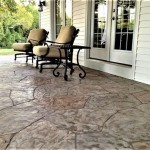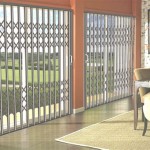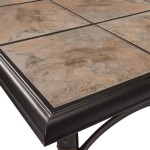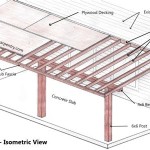Overhead Patio Heaters: Extending the Outdoor Season
Overhead patio heaters represent a significant advancement in outdoor comfort technology, allowing individuals and businesses to extend the usability of patios, decks, and other open-air spaces well beyond the typical warm-weather months. These heaters offer a targeted and efficient method of warming outdoor areas, making them a popular choice for both residential and commercial applications. The functionality, installation options, and energy considerations surrounding overhead patio heaters warrant a detailed examination.
These heating solutions function by radiating heat downwards, directly warming objects and people within their effective range. This contrasts with convection heaters, which heat the air and rely on circulation to distribute warmth. Radiant heat is less susceptible to wind and drafts, making it a more efficient option for outdoor environments. The heat emitted by these heaters is typically infrared radiation, a segment of the electromagnetic spectrum that is not visible to the naked eye but is perceived as heat. The intensity of the infrared radiation determines the perceived warmth.
The design of overhead patio heaters varies depending on the fuel source and heating technology. Electric models commonly utilize heating elements encased in a protective housing, while gas-fired models employ burners that ignite propane or natural gas to generate heat. Both types are engineered to maximize heat output while minimizing energy consumption and ensuring safe operation.
Types of Overhead Patio Heaters
The market offers a variety of overhead patio heaters, each with distinct characteristics and suitability for different applications. The primary differentiation lies in the fuel source: electric, propane, and natural gas. Understanding the nuances of each type is crucial for making an informed purchasing decision.
Electric Overhead Patio Heaters: These heaters are powered by electricity and are generally easier to install than their gas-powered counterparts. They typically require a dedicated electrical circuit to handle the power load. Electric models are available in a range of wattages, with higher wattage models providing greater heat output. A key advantage of electric heaters is their clean operation; they produce no fumes or emissions. They are also often equipped with features like adjustable heat settings and remote controls, offering greater control over the heating experience. However, their operational cost can be higher than gas heaters, especially in areas with high electricity rates.
Propane Overhead Patio Heaters: Propane heaters utilize propane gas as their fuel source and offer the advantage of portability. They do not require an electrical connection, making them suitable for areas where electricity is not readily available. These heaters typically consist of a burner unit connected to a propane tank, which can be concealed within the heater's base or located remotely. Propane heaters provide significant heat output and are effective for warming larger outdoor spaces. However, they require regular refilling of the propane tank, which adds to the operational cost and requires storage space for the tank. They also produce emissions, albeit less than some other fuel types.
Natural Gas Overhead Patio Heaters: Natural gas heaters are connected to a permanent natural gas line, offering a continuous and reliable fuel supply. This eliminates the need for refilling propane tanks, making them a convenient option for permanent outdoor installations. Natural gas heaters typically provide high heat output and are efficient to operate, especially in areas where natural gas is readily accessible and affordable. Installation requires professional plumbing to connect the heater to the gas line, which adds to the initial cost. Similar to propane heaters, they produce emissions, necessitating proper ventilation.
Factors to Consider When Choosing an Overhead Patio Heater
Selecting the appropriate overhead patio heater involves careful consideration of several factors, including the size of the area to be heated, the desired heat output, the available fuel source, and the budget. Failure to consider these factors can lead to inefficient heating, increased energy consumption, and potential safety hazards.
Heating Area and Output: The size of the area to be heated is a primary determinant of the required heat output. Larger areas necessitate heaters with higher BTU (British Thermal Unit) ratings or wattage. Manufacturers typically provide guidelines regarding the effective heating range of their products. It is essential to accurately measure the area and consider factors like wind exposure and insulation levels when selecting a heater. For example, a patio that is shielded from the wind will require less heating power than an exposed deck. Consider the number of people you want to keep warm, too. More people will need more heating coverage.
Fuel Source Availability and Cost: The availability and cost of different fuel sources vary depending on the location. Electric heaters are suitable if electricity is readily available and affordable. Propane heaters offer portability but require regular refilling of propane tanks. Natural gas heaters offer continuous fuel supply but require a permanent gas line connection. It is crucial to compare the long-term operational costs of each fuel source to make a cost-effective decision. Utility companies can provide information on electricity and natural gas rates, while propane suppliers can offer pricing on propane tanks.
Installation Requirements and Safety: Overhead patio heaters require proper installation to ensure safe and efficient operation. Electric heaters require a dedicated electrical circuit to handle the power load. Gas heaters necessitate professional plumbing to connect to the gas line and require proper ventilation to prevent carbon monoxide buildup. It is essential to follow the manufacturer's instructions carefully and consult with qualified professionals for installation. Safety features, such as tip-over shut-off switches and flame failure devices, are crucial for preventing accidents.
Weather Resistance and Durability: Outdoor environments expose patio heaters to harsh weather conditions, including rain, snow, and wind. It is essential to select heaters that are specifically designed for outdoor use and are constructed from durable materials that can withstand these conditions. Look for heaters with weatherproof ratings that indicate their resistance to water and corrosion. Stainless steel and powder-coated aluminum are common materials used in outdoor heaters due to their resistance to rust and corrosion. Regular maintenance, such as cleaning and covering the heater when not in use, can extend its lifespan.
Benefits of Using Overhead Patio Heaters
The adoption of overhead patio heaters provides numerous benefits, transforming outdoor spaces into comfortable and inviting environments for various activities. These benefits extend to both residential and commercial settings, enhancing the overall outdoor experience and extending the usable season of outdoor areas.
Extended Outdoor Season: Perhaps the most significant benefit of overhead patio heaters is their ability to extend the outdoor season. By providing a consistent source of warmth, these heaters enable individuals and businesses to enjoy their outdoor spaces even during cooler months. This is particularly valuable in regions with shorter warm-weather seasons, where patio heaters can significantly extend the time spent outdoors. Restaurants, bars, and cafes can leverage patio heaters to maintain outdoor seating areas throughout the year, attracting customers and increasing revenue.
Enhanced Comfort and Enjoyment: Overhead patio heaters create a comfortable and inviting atmosphere for outdoor gatherings. The radiant heat emitted by these heaters directly warms objects and people, providing a pleasant and cozy environment. This enhances the overall enjoyment of outdoor activities, such as dining, socializing, or simply relaxing on the patio. The ability to control the heat output allows individuals to customize the level of warmth to their preference, ensuring a comfortable experience for everyone.
Increased Property Value: Installing overhead patio heaters can increase the value of a property. By enhancing the usability of outdoor spaces, these heaters add to the overall appeal and functionality of the home or business. A well-designed and comfortable outdoor area can be a significant selling point for potential buyers, especially in areas with mild climates. The investment in patio heaters can be recouped through increased property value and enhanced enjoyment of the outdoor space.
Energy Efficiency Considerations: While overhead patio heaters provide numerous benefits, energy efficiency is a crucial consideration. Different types of heaters have varying energy consumption rates, and it is essential to choose a model that balances heat output with energy efficiency. Electric heaters can be energy-efficient if used sparingly and equipped with adjustable heat settings. Gas heaters, particularly natural gas models, can be more cost-effective for continuous use. Proper insulation and wind protection can also improve energy efficiency by reducing heat loss. Regularly maintaining the heater and using it responsibly can minimize energy consumption and reduce operating costs.
The proper usage of overhead patio heaters encompasses several aspects to ensure both safety and optimal heating efficiency. Regular maintenance and adherence to safety guidelines are critical for preventing accidents and extending the lifespan of the heating unit. Understanding the nuances of heater operation, combined with proactive maintenance, contributes to a more enjoyable and secure outdoor heating experience.
In summary, overhead patio heaters offer a compelling solution for extending the usability of outdoor spaces and enhancing outdoor comfort. By carefully considering the type of heater, installation requirements, and energy efficiency, individuals and businesses can create warm and inviting outdoor environments that can be enjoyed throughout the year.

Overhead Patio Heaters Fever

Ceiling Patio Heaters Patioheaterusa Com

Hanging Patio Heaters From Herschel Ceiling Mounted Infrared For Outdoors

How Close To A Ceiling Can Patio Heater Be Safety Tips For Patios

The 2 Best Outdoor Patio Heaters Of 2024 Reviews By Wirecutter

Infratech Heaters Usa Lifestyle Gallery

Installing Gas Patio Heaters American Lamp Works

The 2 Best Outdoor Patio Heaters Of 2024 Reviews By Wirecutter

Best Outdoor Heating Systems Efficient Infrared Patio Heaters

Electric Patio Heater Guide Woodlanddirect Com








